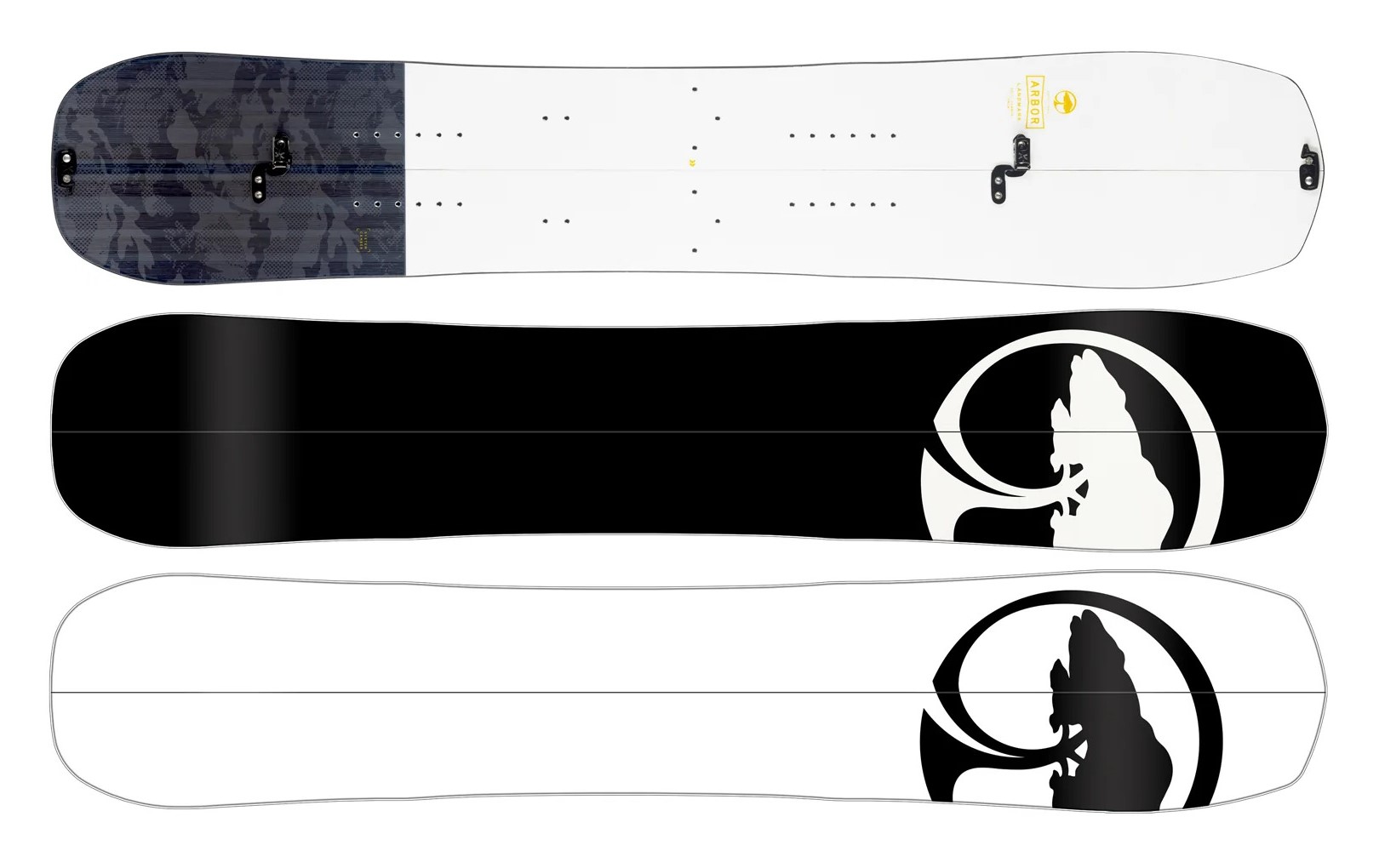Arbor are pioneers of sustainability and lovers of the backcountry so it figures they would introduce a splitboarding line. In fact, it comes as quite a surprise that although the Abacus has been around since 2012 it’s taken Arbor this long to double down on their splitboard offering. For the 2023/2024 season Arbor have four splitboards in their line-up, the Swoon, Coda, Satori, and Landmark.
The Landmark is billed as a great introduction to splitboarding but that doesn’t mean it’s basic, featuring a premium sintered base that’s as fast as any out there, and Karakoram Ultra clips. It comes in various sizes, including 152, 155, 158, 161, and 164W.
Rather than go with the popular hybrid camber designs, which blend camber and rocker to get the best of both worlds, Arbor takes an alternative approach to shaping their boards, with true camber, or true rocker profiles. The Landmark is available in both configurations, it’s a shame for a splitboard to lack a hybrid design, with camber beneath the feet for traction on the skin-track and rocker for float and turns in powder but Arbor has somewhat mitigated the downsides of a non-hybrid design with its proprietary tech liberally applied elsewhere.
Of course, camber profile is king when it comes to the skin track, increasing contact area and therefore making for an easier climb so that’s a big tick for the Landmark split in that regard but how does it perform on the downhill?
Edge hold is somewhat bolstered by the Grip Tech sidecut, with two protruding sections nearest the bindings on each side of the board. These areas are the points at which the tri-radial sidecut meets. We find this kind of tech great for rocker boards, where they lack the inherent edge hold of camber boards, but mostly unnecessary on camber snowboards.
This writer's preference is for a smoother sidecut on camber boards, even if the sidecut is tri-radial, making for more predictable turning at the expense of a little grip on hard-pack and ice.
That being said, Arbor’s Grip Tech feels far less extreme than Lib Tech’s Magne Traction, so if you’re looking for a snowboard with a mellower version of the technology, Arbor would be a good choice.
So Arbor’s sidecut features a tri-radial pattern to maximise control, and they mirror this approach in the base profile as parabolic profiling. Blending separate radii creates ‘...a parabolic arc which gradually reduces the amount of rocker or camber toward the tip and tail’. In the system camber board on test, this tech makes the leading edge of the board less aggressive, mellowing out the camber profile, helping with float, and giving you a more cruisy ride.
The final piece of tech worth talking about in the Landmark is Arbor’s proprietary Fender Tech, which slightly lifts the board's leading edge. The idea is much the same as early rise’ but in Arbor’s version, you don’t shorten the camber section of the board. This means you’re getting all the benefits of early rise in terms of additional float without reducing performance elsewhere.
Arbor rates the Landmark a 6/10 for stiffness. This is on the more playful side of splitboards, some of which can be complete planks. The slightly looser feel of the Landmark has a marginal impact on climbing control and efficiency and might not suit hardcore splitboarders, but for the occasional splitboarder geared up for fun, we don’t see this as a problem.
Weight is a consideration when you have to walk uphill with it strapped to your foot, and the Landmark does well in this regard. The 161 tips the scales at 3200g, comparing well to the Jones Mind Expander at 3186g.
All of this combined makes for a splitboard that’s light and responsive enough to climb, with the control and performance for carving deep lines on the descent. Arbor’s decision to offer camber or rocker, rather than hybrid might at first appear limiting, but in both versions of the Landmark they appear to have addressed the potential downsides when used on a splitboard.

















